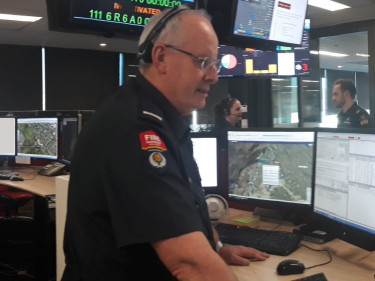We take the call
Every call for assistance responded to by Fire and Emergency New Zealand is answered by someone at one of our three Fire Communications Centres - in Auckland, Wellington and Christchurch. From these centres, Fire Communications staff will dispatch the appropriate fire brigades to respond to the emergency. Fire Communications is staffed on a rotating shift basis to support our operations, which are available 24/7, 365 days a year.
Our Communications Centres are equipped with computer-aided dispatch systems, radio and telephone communications, computerised mapping systems, and multiple fall-back systems.
The role of a Fire and Emergency Dispatcher is to:
- be the interface between the public and Fire and Emergency New Zealand
- allocate resources to incidents and stay in radio contact with the teams responding to the incident as it progresses
- support incident ground operations by providing information and allocation of additional resources where required
- monitor the status of our fire appliances and ensure there are enough resources available to response to further emergencies
- collect operational information from the incident to provide a basis for performance reporting such as response times.
- alert other services such as Police and Ambulance to the incident as required
Do you have what it takes?
A career in Fire Communications is challenging yet immensely rewarding and no two days are the same. Our people come from a variety of different backgrounds, like other emergency services, the New Zealand Defence Force, customer service or call centres, or volunteering with Fire and Emergency New Zealand.
The role requires attention to detail, the ability to multi task and to think on your feet, and excellent customer service skills. You’ll need to have good typing skills, a good knowledge of New Zealand geography, and be available for shift work including nights. Most importantly, you’ll need to confidently manage highly charged situations with compassion and patience.
If this sounds like you, we want you to apply!
What to expect
Your training will last five weeks in total including an initial induction week at our National Training Centre in Rotorua. Then you’ll have two weeks of call taker training where you’ll learn how to answer 111 calls and enter the relevant information into our dispatch system. You will also answer a variety of administration calls from the public and other Fire and Emergency personnel.
After your call taking training, you will then take live calls while being mentored by an experienced Fire and Emergency Dispatcher. When your mentor feels confident that you can operate independently, you will be assessed and, subject to a successful pass, signed off as a qualified Call Taker under the guidance of your watch Shift Manager.
Next is a two-week dispatcher course where you get trained in dispatching the appropriate fire appliances to respond to incidents. You’ll undergo the same mentor and assessment process to become a qualified Dispatcher.
To get a real sense of what it’s like to be a Fire and Emergency Dispatcher, watch this video of some of our Communication Centre staff talking about their role.














